Search Result
Results for "
esterified
" in MedChemExpress (MCE) Product Catalog:
9
Biochemical Assay Reagents
9
Isotope-Labeled Compounds
| Cat. No. |
Product Name |
Target |
Research Areas |
Chemical Structure |
-
- HY-126220A
-
|
|
Fluorescent Dye
|
Others
|
|
KMG-301AM TFA is the acetoxy methyl esterified form of KMG-301. KMG-301AM TFA successfully accumulates in mitochondria and then it is hydrolyzed to KMG-301. KMG-301 is an Mg 2+-selective fluorescent probe functional in mitochondria in intact cells. Since the mitochondrial membrane is impermeable to KMG-301, it is not released upon depolarization of the mitochondrial membrane potential. KMG-301 can indicate changes in mitochondrial Mg2+ concentration and shows Mg 2+ transport across the mitochondrial membrane in the early phases of a cellular model .
|
-
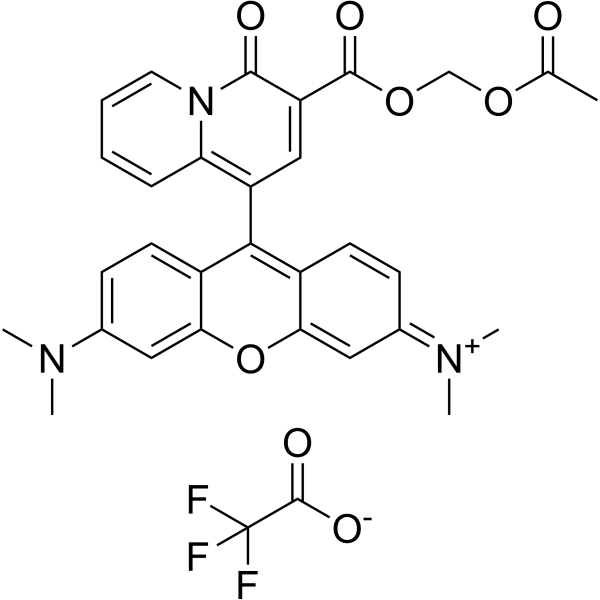
-
- HY-W004286
-
|
|
Others
|
Others
|
|
Methyl laurate, a 12-carbon saturated fatty acid, is an esterified version of lauric acid .
|
-
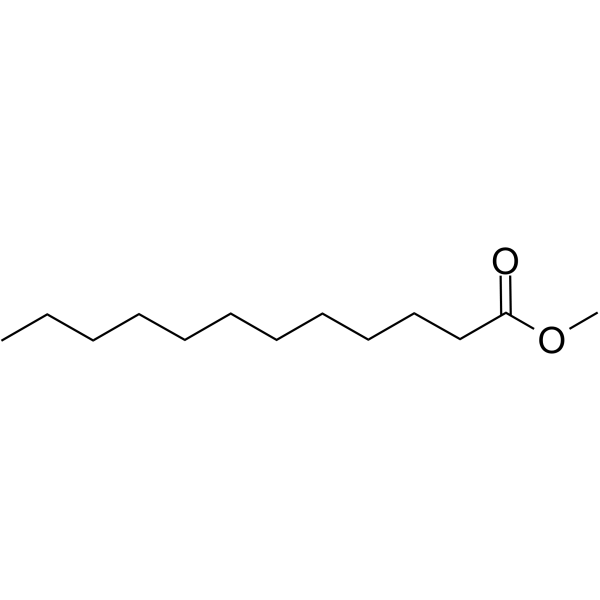
-
- HY-135376
-
|
|
Others
|
Metabolic Disease
|
|
Atorvastatin methyl ester (Compound 2a) is a methyl esterified derivative of Atorvastatin. Atorvastatin methyl ester inhibits the 9-cis-RA-induced Gal4 reporter activity more strongly than Atorvastatin .
|
-
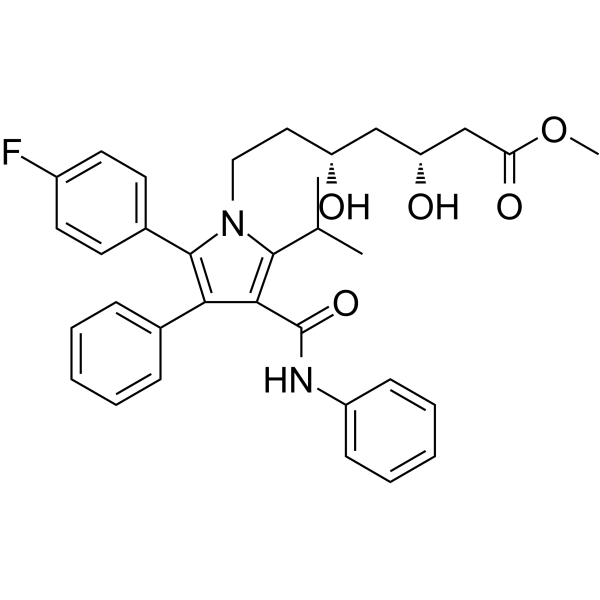
-
- HY-N7623
-
|
|
Others
|
Cancer
|
|
Ursonic acid methyl ester is an esterified derivative of Ursolic acid (HY-N0140). Ursonic acid methyl ester shows growth inhibitory activity against four tumor cell lines, HL-60, BGC, Bel-7402 and Hela with ED50 values of >100 µg/ml .
|
-

-
- HY-126220
-
|
|
Fluorescent Dye
|
Others
|
|
KMG-301AM is the acetoxy methyl esterified form of KMG-301. KMG-301AM successfully accumulates in mitochondria and then it is hydrolyzed to KMG-301. KMG-301 is an Mg 2+-selective fluorescent probe functional in mitochondria in intact cells. Since the mitochondrial membrane is impermeable to KMG-301, it is not released upon depolarization of the mitochondrial membrane potential. KMG-301 can indicate changes in mitochondrial Mg2+ concentration and shows Mg 2+ transport across the mitochondrial membrane in the early phases of a cellular model .
|
-
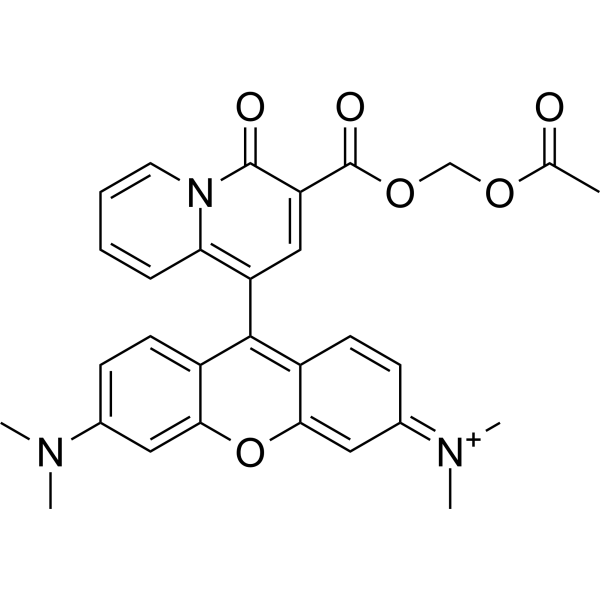
-
- HY-W127341
-
|
|
Biochemical Assay Reagents
|
Others
|
|
Phytanic acid methyl esteris an esterified form of long-chain fatty acid methyl esters and phytanic acid, which has been found in Greek tobacco.
|
-
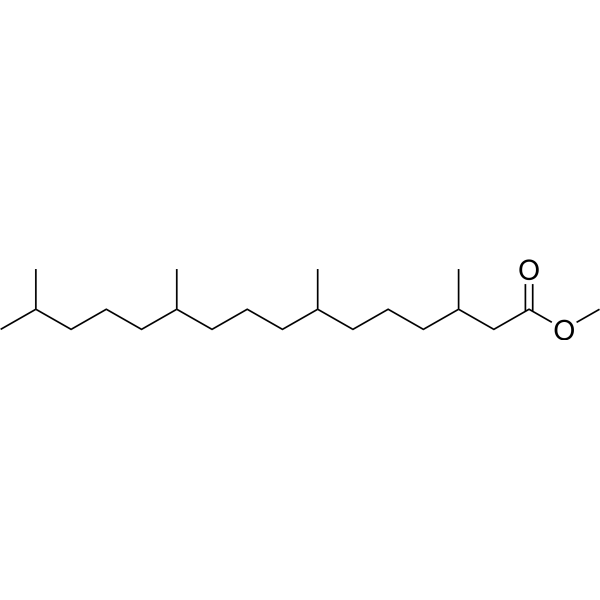
-
- HY-N1016
-
|
|
|
|
|
3β-Hydroxy-11,12-epoxy–friedoolean-14-enyl palmitate is a fatty acids esterified with triterpenes .
|
-
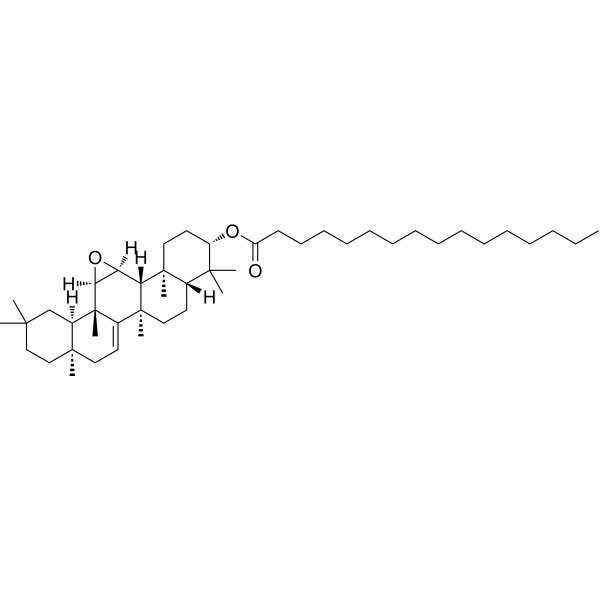
-
- HY-131307
-
|
Actinotetraose hexatiglate
|
Endogenous Metabolite
|
Others
|
|
Tigloside (Actinotetraose hexatiglate) is a symmetrical tetrasaccharide esterified with Tiglic acids (HY-W012999), which is detected as a secondary metabolite of an actinomycete strain Amycolatopsis .
|
-
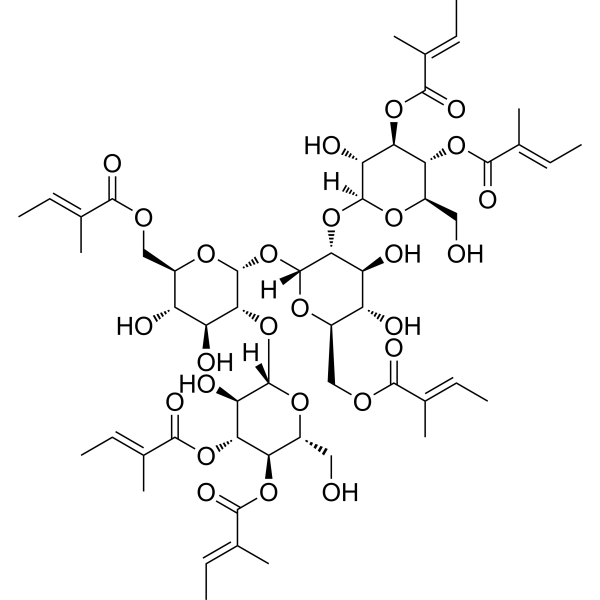
-
- HY-113217
-
|
|
Liposome
Endogenous Metabolite
|
Others
|
|
Cholesteryl oleate is an esterified form of Cholesterol. Cholesteryl oleate can be used in the generation of solid lipid nanoparticle (SLN, a nanoparticle-based method for gene therapy) .
|
-
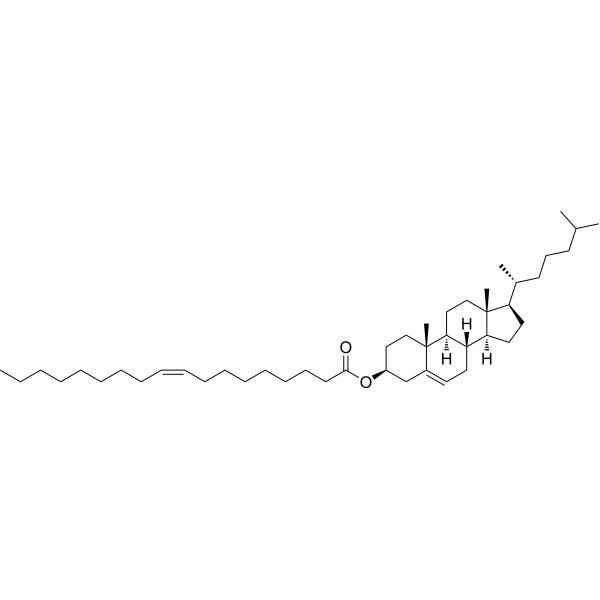
-
- HY-112540B
-
|
|
Endogenous Metabolite
|
Metabolic Disease
|
|
Acetoacetic acid sodium is a metabolite of non-esterified fatty acids, involved in the development of human diabetes. Acetoacetic acid sodium induces oxidative stress to inhibit the assembly of very low density lipoprotein in bovine hepatocytes .
|
-

-
- HY-W004286R
-
|
Methyl dodecanoate (Standard)
|
Others
|
Others
|
|
Methyl laurate (Standard) is the analytical standard of Methyl laurate. This product is intended for research and analytical applications. Methyl laurate, a 12-carbon saturated fatty acid, is an esterified version of lauric acid .
|
-
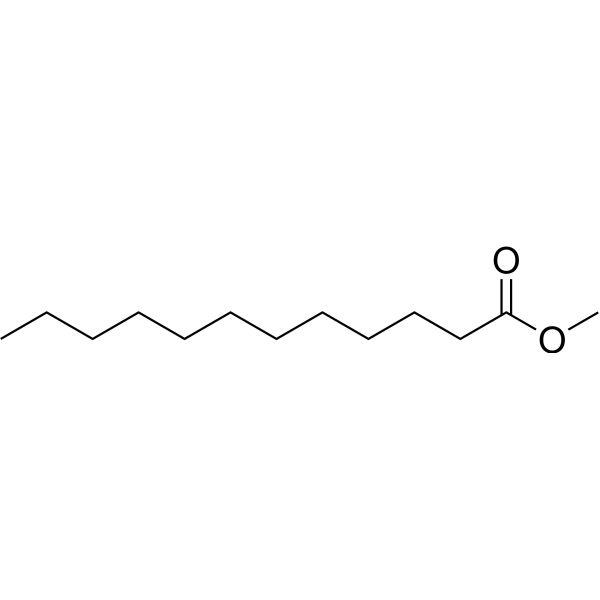
-
- HY-W016172
-
|
|
Biochemical Assay Reagents
|
Others
|
|
Methyl decanoate is a class of esters consisting of medium-chain fatty acids, capric acid, esterified with methanol. The compound has a fruity smell and is commonly used as a flavoring in foods such as baked goods, candy and beverages.
|
-
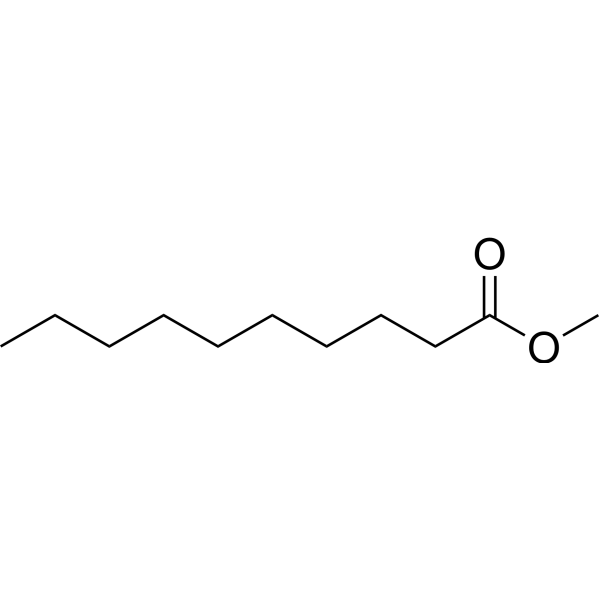
-
- HY-113217S1
-
|
|
Isotope-Labeled Compounds
Endogenous Metabolite
|
Others
|
|
Cholesteryl oleate-d7-1 is deuterium labeled Cholesteryl oleate. Cholesteryl oleate is an esterified form of Cholesterol. Cholesteryl oleate can be used in the generation of solid lipid nanoparticle (SLN, a nanoparticle-based method for gene therapy)
|
-

-
- HY-163336
-
|
14,15-LTA4 methyl ester
|
Others
|
Inflammation/Immunology
|
|
14,15-Leukotriene A4 methyl ester (14,15-LTA4 methyl ester) is the methyl esterified form of Leukotriene A4, which can be used for the study of biological effects of leukotrienes .
|
-

-
- HY-113217S
-
|
|
Endogenous Metabolite
|
Others
|
|
Cholesteryl oleate-d7 is deuterium labeled Cholesteryl oleate. Cholesteryl oleate is an esterified form of Cholesterol. Cholesteryl oleate can be used in the generation of solid lipid nanoparticle (SLN, a nanoparticle-based method for gene therapy)[1
|
-
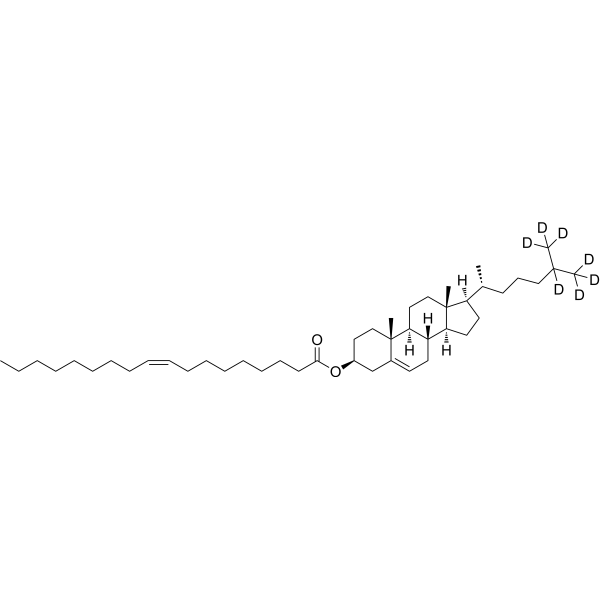
-
- HY-W013214
-
|
|
Endogenous Metabolite
|
Others
|
|
Ethyl arachidonate is a lipophilic esterified form of arachidonic acid (AA) and can be added into dietary regimens or fed to cultured cells as a source of exogenous arachidonate. Ethyl arachidonate is the main species of fatty acid ethyl esters (FAEE) in brain of alcohol-intoxicated subjects .
|
-

-
- HY-W004260
-
|
Eicosanoic acid
|
Endogenous Metabolite
|
Others
|
|
Arachidonic acid (Icosanoic acid), an orally active long-chain fatty acid, is present in all mammalian cells, typically esterified to membrane phospholipids, and is one of the most abundant polyunsaturated fatty acids present in human tissue. Moreover, Arachidonic acid is an important mediator of inflammation .
|
-
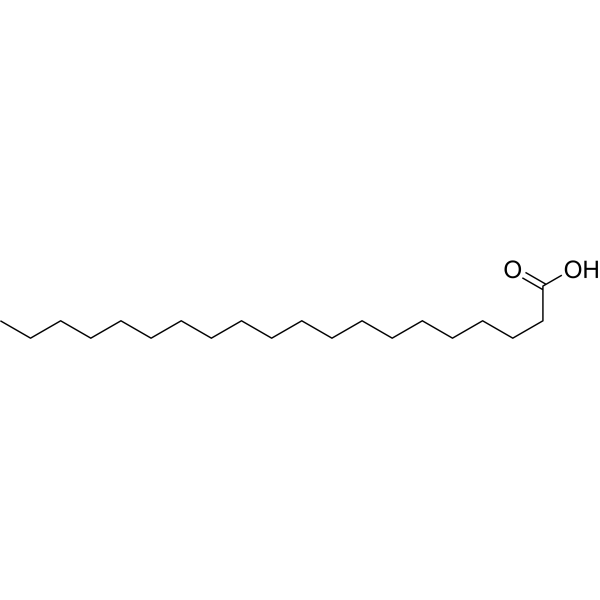
-
- HY-W004260S1
-
|
Icosanoic acid-d39
|
Isotope-Labeled Compounds
Endogenous Metabolite
|
Others
|
|
Arachidic acid-d39 is the deuterium labeled Arachidic acid. Arachidonic acid (Icosanoic acid), a long-chain fatty acid, is present in all mammalian cells, typically esterified to membrane phospholipids, and is one of the most abundant polyunsaturated fatty acids present in human tissue[1][2].
|
-

-
- HY-W004260S
-
|
Icosanoic acid-d2
|
Isotope-Labeled Compounds
Endogenous Metabolite
|
Others
|
|
Arachidic acid-d2 is the deuterium labeled Arachidic acid. Arachidonic acid (Icosanoic acid), a long-chain fatty acid, is present in all mammalian cells, typically esterified to membrane phospholipids, and is one of the most abundant polyunsaturated fatty acids present in human tissue[1][2].
|
-

-
- HY-W004260S2
-
|
Icosanoic acid-d3
|
Isotope-Labeled Compounds
Endogenous Metabolite
|
Others
|
|
Arachidic acid-d3) is the deuterium labeled Arachidic acid. Arachidonic acid (Icosanoic acid), a long-chain fatty acid, is present in all mammalian cells, typically esterified to membrane phospholipids, and is one of the most abundant polyunsaturated fatty acids present in human tissue[1][2].
|
-

-
- HY-W004260S3
-
|
Icosanoic acid-13C
|
Isotope-Labeled Compounds
Endogenous Metabolite
|
Cancer
|
|
Arachidic acid- 13C is the 13C labeled Arachidic acid. Arachidonic acid (Icosanoic acid), a long-chain fatty acid, is present in all mammalian cells, typically esterified to membrane phospholipids, and is one of the most abundant polyunsaturated fatty acids present in human tissue[1][2][3].
|
-
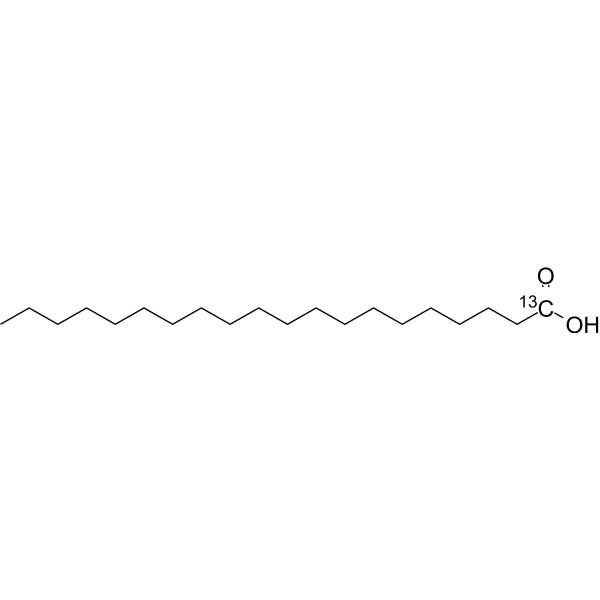
-
- HY-W004260S4
-
|
Icosanoic acid-d4
|
Isotope-Labeled Compounds
Endogenous Metabolite
|
|
|
Arachidic acid-d4 is the deuterium labeled Arachidic acid. Arachidonic acid (Icosanoic acid), a long-chain fatty acid, is present in all mammalian cells, typically esterified to membrane phospholipids, and is one of the most abundant polyunsaturated fatty acids present in human tissue[1][2].
|
-

-
- HY-W004260R
-
|
Eicosanoic acid (Standard)
|
Endogenous Metabolite
|
Others
|
|
Arachidic acid (Standard) is the analytical standard of Arachidic acid. This product is intended for research and analytical applications. Arachidonic acid (Icosanoic acid), a long-chain fatty acid, is present in all mammalian cells, typically esterified to membrane phospholipids, and is one of the most abundant polyunsaturated fatty acids present in human tissue .
|
-

-
- HY-145942
-
|
|
Biochemical Assay Reagents
|
Inflammation/Immunology
|
|
Octenyl succinic anhydride can be used to esterify Starch to yield a hydrocolloid with amphiphilic properties, octenyl succinylated starch (OS-starch). Octenyl succinic anhydride (OSA) modification affects interaction between molecules on the outer surfaces of two starch granules by altering molecular structures on the outer surfaces .
|
-
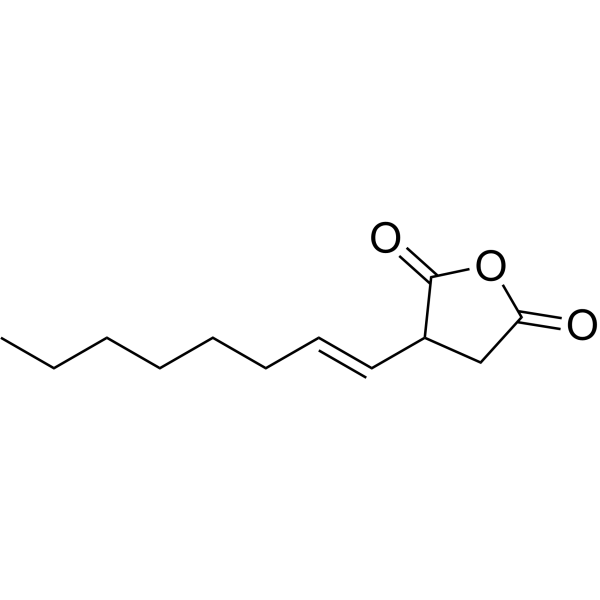
-
- HY-W004260S5
-
|
|
Endogenous Metabolite
|
Others
|
|
Arachidic acid-d4-1 is the deuterium labeled Arachidic acid[1]. Arachidonic acid (Icosanoic acid), a long-chain fatty acid, is present in all mammalian cells, typically esterified to membrane phospholipids, and is one of the most abundant polyunsaturated fatty acids present in human tissue[2][3].
|
-
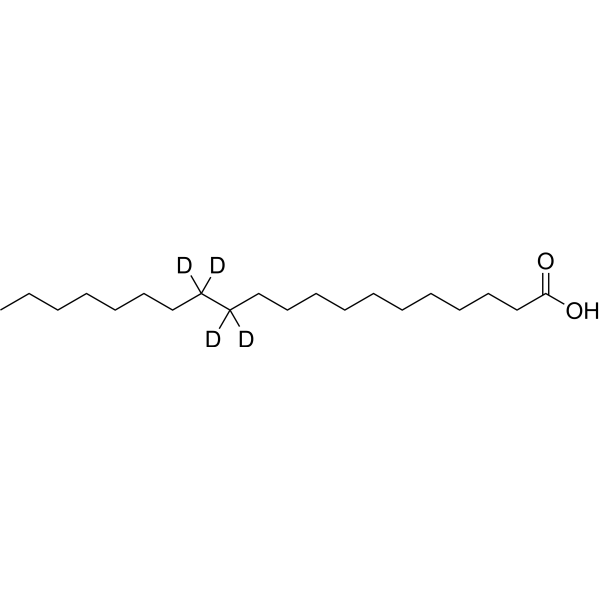
-
- HY-W009276
-
|
Methyl GLA
|
Apoptosis
|
Cancer
|
|
γ-Linolenic Acid methyl ester (Methyl GLA) is an esterified version of γ-Linolenic Acid (GLA), which is an ω-6 fatty acid, serves as melanoma cell proliferation inhibitors. γ-Linolenic Acid methyl ester inhibits ADP-induced blood platelet aggregation and induces apoptosis .
|
-
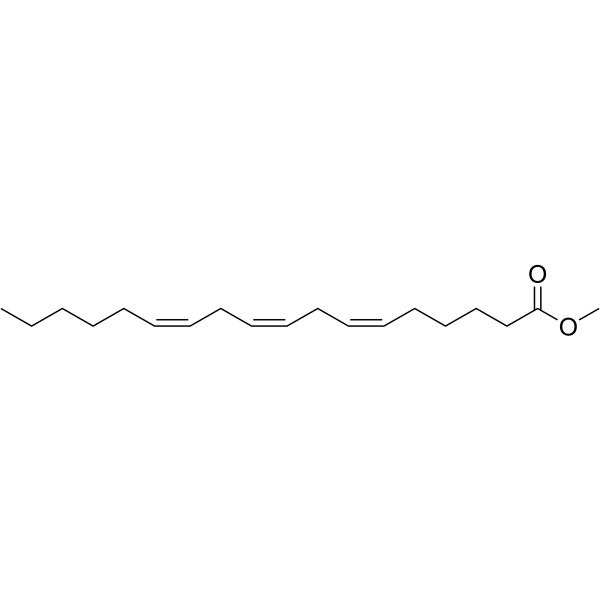
-
- HY-W013466
-
|
Sebacic acid dimethyl ester
|
Biochemical Assay Reagents
|
Others
|
|
Dimethyl decanedioate belongs to the class of diesters and consists of a sebacic acid backbone (also known as sebacic acid) esterified with two methyl groups. This compound has a fruity smell and is commonly used as a flavor and fragrance ingredient in a variety of products, including perfumes, soaps and cosmetics. It can also be used as a plasticizer in the production of polymers and as a neutralizer in the synthesis of certain drugs.
|
-
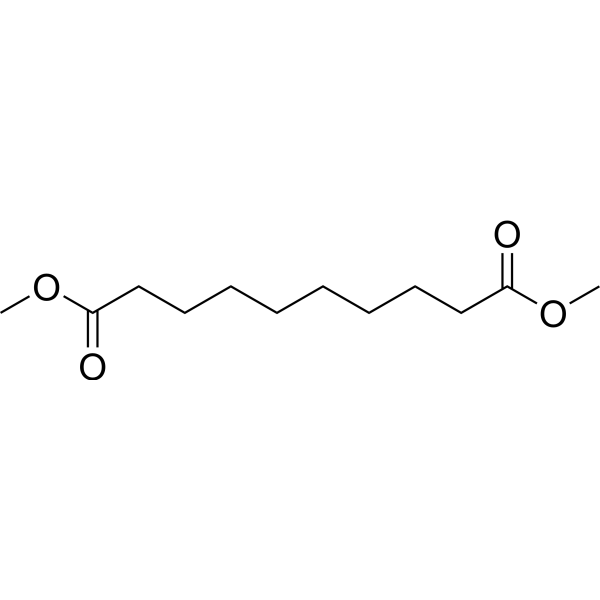
-
- HY-113209
-
|
|
Endogenous Metabolite
|
Others
|
|
8-Isoprostaglandin F2α is an isoprostane produced by the non-enzymatic peroxidation of arachidonic acid in membrane phospholipids. 8-Isoprostaglandin F2α is present in human plasma in two distinct forms - esterified in phospholipids and as the free acid. 8-Isoprostaglandin F2α is a weak TP receptor agonist in vascular smooth muscle.
|
-
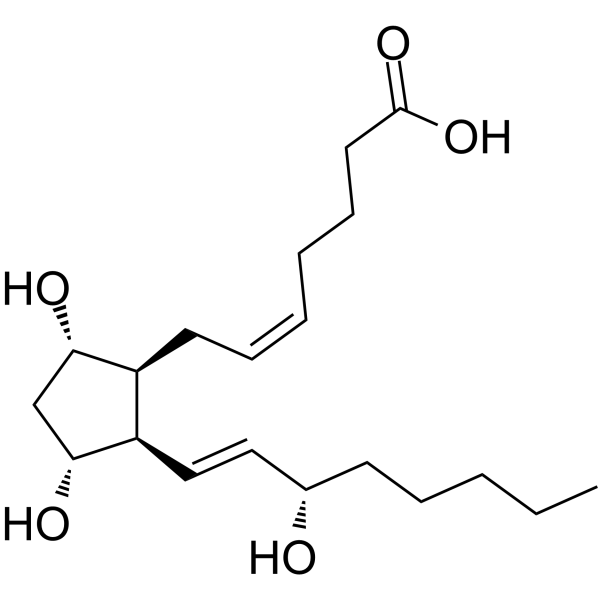
-
- HY-W015305
-
|
Octanoic acid ethyl ester
|
Biochemical Assay Reagents
|
Others
|
|
Ethyl octanoate is a class of esters consisting of the medium-chain fatty acid octanoic acid esterified with ethanol. The compound has a fruity smell and is commonly used as a flavoring in foods such as baked goods, candy and beverages. It can also be used as a fragrance ingredient in personal care products, and as a solvent or plasticizer in various industrial applications. In addition, Ethyl octanoate can be used as a starting material for the synthesis of other organic compounds.
|
-

-
- HY-N1434
-
|
Methyl 4-hydroxycinnamate
|
|
|
|
Methyl p-coumarate (Methyl 4-hydroxycinnamate), an orally active esterified derivative of p-Coumaric acid (pCA), can be isolated from the flower of Trixis michuacana var longifolia. Methyl p-coumarate could inhibit the melanin formation in B16 mouse melanoma cells. Methyl p-coumarate also has strong in vitro inhibitory effect on A. alternata and other pathogens .
|
-
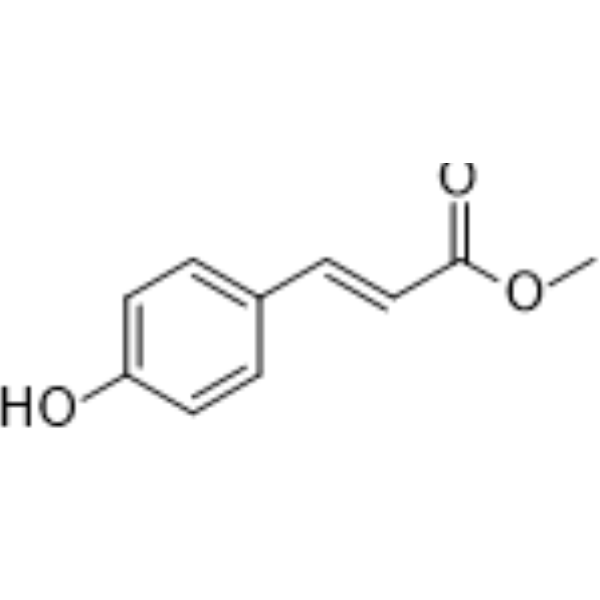
-
- HY-W014207
-
|
|
Biochemical Assay Reagents
|
Others
|
|
Ethyl undecanoate is a class of esters consisting of long-chain straight-chain fatty acids, undecanoic acid, esterified with ethanol. The compound has a fruity smell and is commonly used as a flavoring in foods such as baked goods, candy and beverages. It is also used as a fragrance ingredient in personal care products and as a lubricant or plasticizer in various industrial applications. In addition, Ethyl undecanoate can be used as a starting material for the synthesis of other organic compounds.
|
-
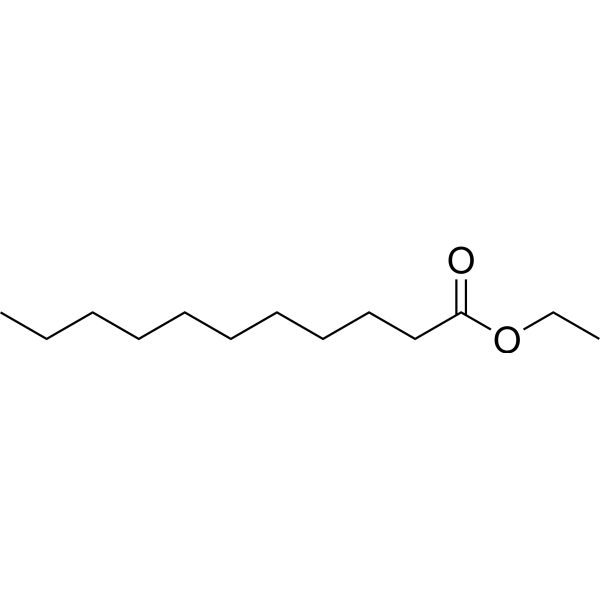
-
- HY-134495
-
|
N-Acetylcysteine ethyl ester; NACET
|
Reactive Oxygen Species
|
Metabolic Disease
|
|
N-Acetyl-L-cysteine ethyl ester is an esterified form of N-acetyl-L-cysteine (NAC). N-Acetyl-L-cysteine ethyl ester exhibits enhanced cell permeability, and produce NAC and cysteine. N-Acetyl-L-cysteine ethyl ester increases circulating hydrogen sulfide (H2S) and can be used as an H2S producer. N-Acetyl-L-cysteine ethyl ester has the potential to substitute NAC as a mucolytic agent, and as a GSH-related antioxidant .
|
-
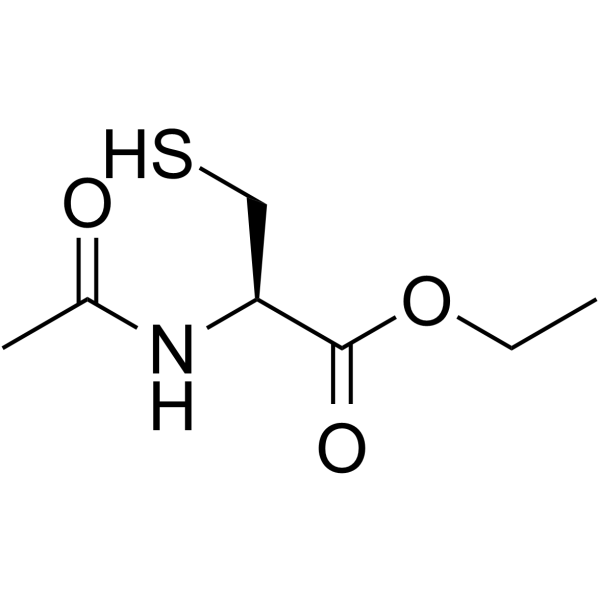
-
- HY-W015667
-
|
Ethyl 2-methylvalerate
|
Biochemical Assay Reagents
|
Others
|
|
Ethyl 2-methylpentanoate is a class of esters consisting of branched-chain isovaleric acid esterified with ethanol. The compound has a fruity, pungent smell and is commonly used as a flavoring in foods such as baked goods, dairy products and beverages. It can also be used as a fragrance ingredient in personal care products, and as a solvent or plasticizer in various industrial applications. In addition, Ethyl 2-methylpentanoate can be used as a starting material for the synthesis of other organic compounds.
|
-
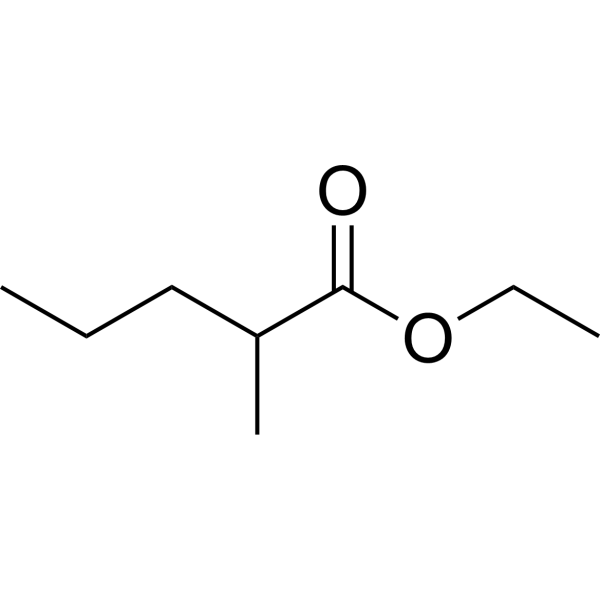
-
- HY-N0081
-
|
|
Calcium Channel
|
Infection
|
|
(±)-Praeruptorin A is the di-esterified product of cis-khellactone (CKL) and the major active ingredient in Peucedani Radix which consists of the dried roots of Peucedanum praeruptorumDunn (Apiaceae). (±)-Praeruptorin A has been widely employed as one of the famous traditional Chinese medicines (TCMs) for the treatment of cough with thick sputum and dyspnea, nonproductive cough and upper respiratory infections for centuries in China. (±)-Praeruptorin A has dramatically therapeutic effects on hypertension mainly through acting as a Ca 2+-influx blocker .
|
-
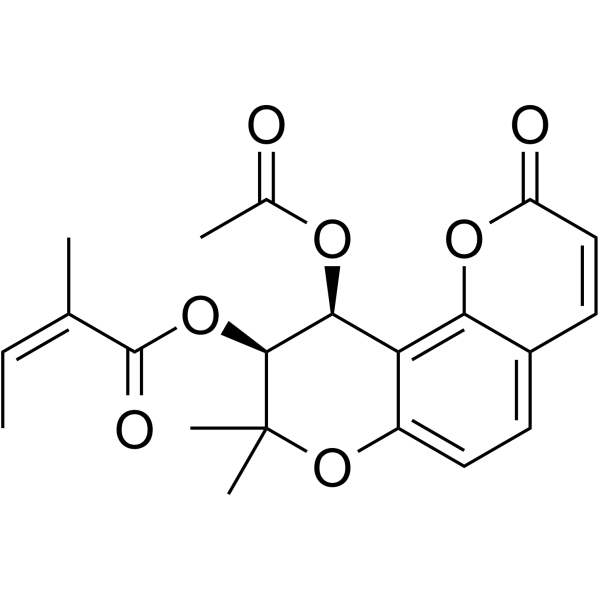
-
- HY-W014449
-
|
|
Biochemical Assay Reagents
|
Others
|
|
4-Nitrophenyl butyrate consists of butyric acid chains esterified with 4-nitrophenol groups, thus giving it a yellow color. This compound is commonly used as a substrate in enzyme assays to measure esterase and lipase activity. When these enzymes cleave the ester bond, the nitrophenol group is released and the color changes from yellow to orange. Thus, the rate of color change can be used to determine enzyme activity. In addition, 4-Nitrophenyl butyrate can also be used as organic synthesis reagent and dye intermediate.
|
-

-
- HY-113209S1
-
|
|
Endogenous Metabolite
|
Others
|
|
8-iso Prostaglandin F2α-d9 is the deuterium labeled 8-Isoprostaglandin F2α. 8-Isoprostaglandin F2α is an isoprostane produced by the non-enzymatic peroxidation of arachidonic acid in membrane phospholipids. 8-Isoprostaglandin F2α is present in human plasma in two distinct forms - esterified in phospholipids and as the free acid. 8-Isoprostaglandin F2α is a weak TP receptor agonist in vascular smooth muscle.
|
-
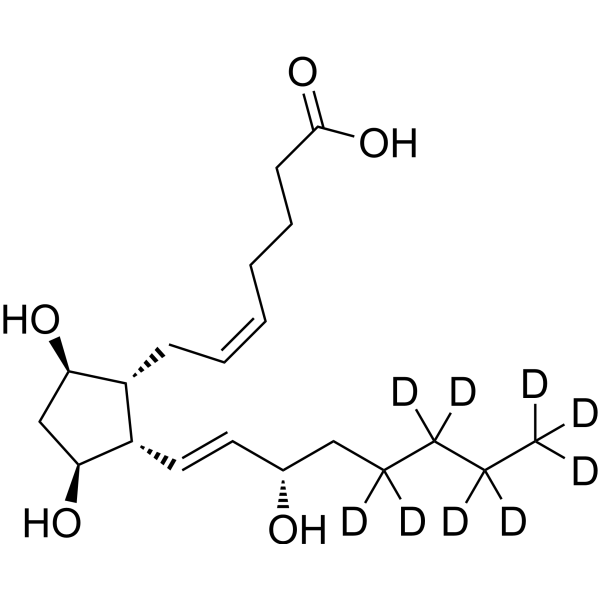
| Cat. No. |
Product Name |
Type |
-
- HY-113217
-
|
|
Drug Delivery
|
|
Cholesteryl oleate is an esterified form of Cholesterol. Cholesteryl oleate can be used in the generation of solid lipid nanoparticle (SLN, a nanoparticle-based method for gene therapy) .
|
-
- HY-W016172
-
|
|
Biochemical Assay Reagents
|
|
Methyl decanoate is a class of esters consisting of medium-chain fatty acids, capric acid, esterified with methanol. The compound has a fruity smell and is commonly used as a flavoring in foods such as baked goods, candy and beverages.
|
-
- HY-145942
-
|
|
Biochemical Assay Reagents
|
|
Octenyl succinic anhydride can be used to esterify Starch to yield a hydrocolloid with amphiphilic properties, octenyl succinylated starch (OS-starch). Octenyl succinic anhydride (OSA) modification affects interaction between molecules on the outer surfaces of two starch granules by altering molecular structures on the outer surfaces .
|
-
- HY-W013466
-
|
Sebacic acid dimethyl ester
|
Biochemical Assay Reagents
|
|
Dimethyl decanedioate belongs to the class of diesters and consists of a sebacic acid backbone (also known as sebacic acid) esterified with two methyl groups. This compound has a fruity smell and is commonly used as a flavor and fragrance ingredient in a variety of products, including perfumes, soaps and cosmetics. It can also be used as a plasticizer in the production of polymers and as a neutralizer in the synthesis of certain drugs.
|
-
- HY-W127341
-
|
|
Biochemical Assay Reagents
|
|
Phytanic acid methyl esteris an esterified form of long-chain fatty acid methyl esters and phytanic acid, which has been found in Greek tobacco.
|
-
- HY-W015305
-
|
Octanoic acid ethyl ester
|
Biochemical Assay Reagents
|
|
Ethyl octanoate is a class of esters consisting of the medium-chain fatty acid octanoic acid esterified with ethanol. The compound has a fruity smell and is commonly used as a flavoring in foods such as baked goods, candy and beverages. It can also be used as a fragrance ingredient in personal care products, and as a solvent or plasticizer in various industrial applications. In addition, Ethyl octanoate can be used as a starting material for the synthesis of other organic compounds.
|
-
- HY-W014207
-
|
|
Biochemical Assay Reagents
|
|
Ethyl undecanoate is a class of esters consisting of long-chain straight-chain fatty acids, undecanoic acid, esterified with ethanol. The compound has a fruity smell and is commonly used as a flavoring in foods such as baked goods, candy and beverages. It is also used as a fragrance ingredient in personal care products and as a lubricant or plasticizer in various industrial applications. In addition, Ethyl undecanoate can be used as a starting material for the synthesis of other organic compounds.
|
-
- HY-W015667
-
|
Ethyl 2-methylvalerate
|
Biochemical Assay Reagents
|
|
Ethyl 2-methylpentanoate is a class of esters consisting of branched-chain isovaleric acid esterified with ethanol. The compound has a fruity, pungent smell and is commonly used as a flavoring in foods such as baked goods, dairy products and beverages. It can also be used as a fragrance ingredient in personal care products, and as a solvent or plasticizer in various industrial applications. In addition, Ethyl 2-methylpentanoate can be used as a starting material for the synthesis of other organic compounds.
|
-
- HY-W014449
-
|
|
Biochemical Assay Reagents
|
|
4-Nitrophenyl butyrate consists of butyric acid chains esterified with 4-nitrophenol groups, thus giving it a yellow color. This compound is commonly used as a substrate in enzyme assays to measure esterase and lipase activity. When these enzymes cleave the ester bond, the nitrophenol group is released and the color changes from yellow to orange. Thus, the rate of color change can be used to determine enzyme activity. In addition, 4-Nitrophenyl butyrate can also be used as organic synthesis reagent and dye intermediate.
|
| Cat. No. |
Product Name |
Category |
Target |
Chemical Structure |
| Cat. No. |
Product Name |
Chemical Structure |
-
- HY-W004260S1
-
|
|
|
Arachidic acid-d39 is the deuterium labeled Arachidic acid. Arachidonic acid (Icosanoic acid), a long-chain fatty acid, is present in all mammalian cells, typically esterified to membrane phospholipids, and is one of the most abundant polyunsaturated fatty acids present in human tissue[1][2].
|
-

-
- HY-113217S1
-
|
|
|
Cholesteryl oleate-d7-1 is deuterium labeled Cholesteryl oleate. Cholesteryl oleate is an esterified form of Cholesterol. Cholesteryl oleate can be used in the generation of solid lipid nanoparticle (SLN, a nanoparticle-based method for gene therapy)
|
-

-
- HY-113217S
-
|
|
|
Cholesteryl oleate-d7 is deuterium labeled Cholesteryl oleate. Cholesteryl oleate is an esterified form of Cholesterol. Cholesteryl oleate can be used in the generation of solid lipid nanoparticle (SLN, a nanoparticle-based method for gene therapy)[1
|
-

-
- HY-W004260S
-
|
|
|
Arachidic acid-d2 is the deuterium labeled Arachidic acid. Arachidonic acid (Icosanoic acid), a long-chain fatty acid, is present in all mammalian cells, typically esterified to membrane phospholipids, and is one of the most abundant polyunsaturated fatty acids present in human tissue[1][2].
|
-

-
- HY-W004260S2
-
|
|
|
Arachidic acid-d3) is the deuterium labeled Arachidic acid. Arachidonic acid (Icosanoic acid), a long-chain fatty acid, is present in all mammalian cells, typically esterified to membrane phospholipids, and is one of the most abundant polyunsaturated fatty acids present in human tissue[1][2].
|
-

-
- HY-W004260S3
-
|
|
|
Arachidic acid- 13C is the 13C labeled Arachidic acid. Arachidonic acid (Icosanoic acid), a long-chain fatty acid, is present in all mammalian cells, typically esterified to membrane phospholipids, and is one of the most abundant polyunsaturated fatty acids present in human tissue[1][2][3].
|
-

-
- HY-W004260S4
-
|
|
|
Arachidic acid-d4 is the deuterium labeled Arachidic acid. Arachidonic acid (Icosanoic acid), a long-chain fatty acid, is present in all mammalian cells, typically esterified to membrane phospholipids, and is one of the most abundant polyunsaturated fatty acids present in human tissue[1][2].
|
-

-
- HY-W004260S5
-
|
|
|
Arachidic acid-d4-1 is the deuterium labeled Arachidic acid[1]. Arachidonic acid (Icosanoic acid), a long-chain fatty acid, is present in all mammalian cells, typically esterified to membrane phospholipids, and is one of the most abundant polyunsaturated fatty acids present in human tissue[2][3].
|
-

-
- HY-113209S1
-
|
|
|
8-iso Prostaglandin F2α-d9 is the deuterium labeled 8-Isoprostaglandin F2α. 8-Isoprostaglandin F2α is an isoprostane produced by the non-enzymatic peroxidation of arachidonic acid in membrane phospholipids. 8-Isoprostaglandin F2α is present in human plasma in two distinct forms - esterified in phospholipids and as the free acid. 8-Isoprostaglandin F2α is a weak TP receptor agonist in vascular smooth muscle.
|
-

Your information is safe with us. * Required Fields.
Inquiry Information
- Product Name:
- Cat. No.:
- Quantity:
- MCE Japan Authorized Agent:












































